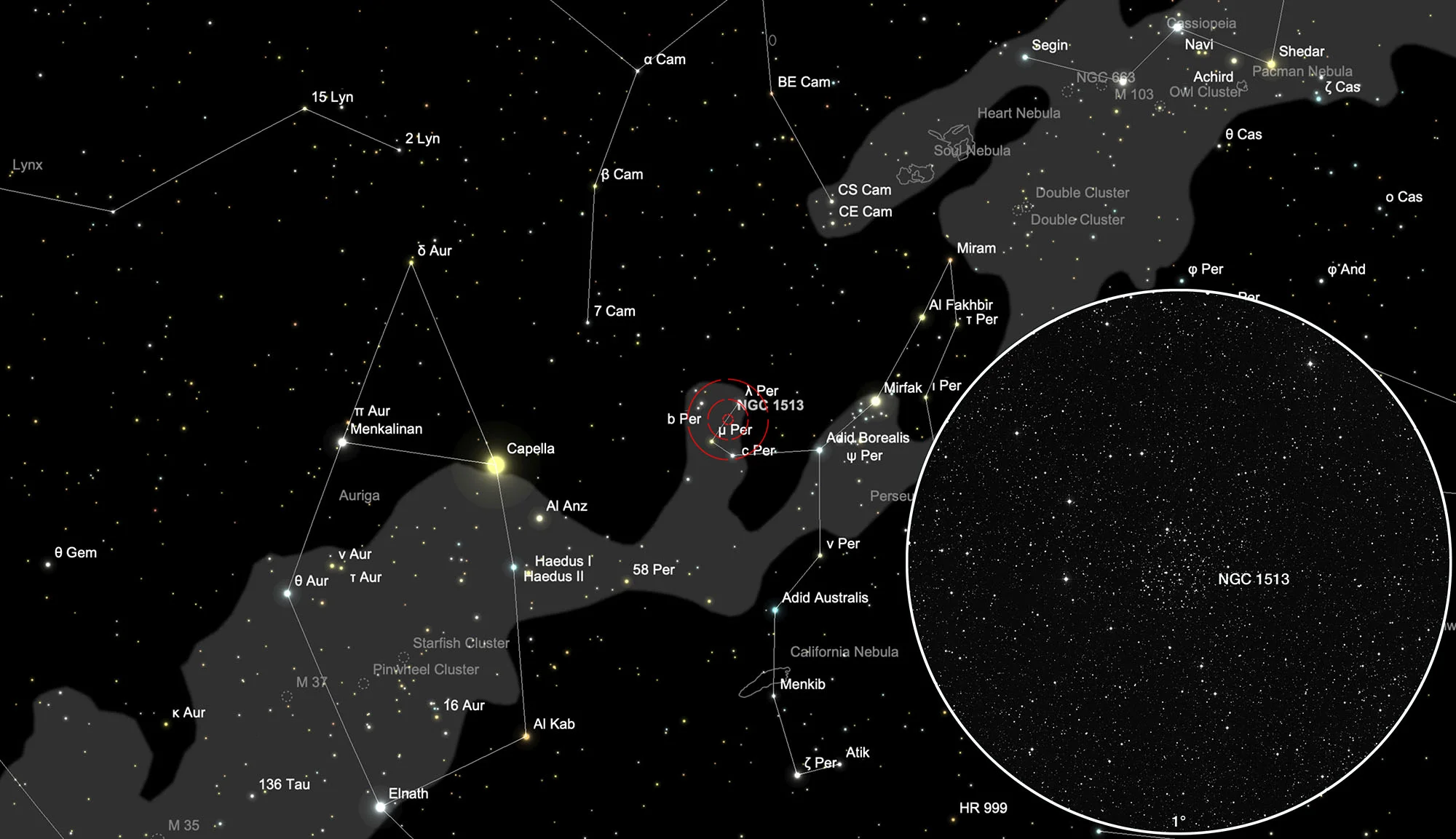Ring Cluster (NGC 1513)

History
The cluster was discovered by William Herschel on 28 December 1790 using his famous reflecting telescope with 18.7 inch aperture and 20 feet focal length. He cataloged it as VII 60 and noted: «A large cluster of considerably large stars, pretty compressed and very rich, of irregular figure, 7' diameter». [465] It was added as NGC 1513 by Dreyer in his «New General Catalogue». [313]
Physical Properties
NGC 1513 is an open star cluster in the constellation Perseus. According to Trümpler, this cluster is classified as II 1 m. II stands for a clear concentration to the centre and a good contrast to the sky, 1 indicates an even brightness distribution of the stars. m refers to the number of visible members of the cluster and is an abbreviation for moderate. The age of this open star cluster is roughly 130 million years, its distance as about 1320 pc (4300 light years). [138]
| Designation | NGC 1513 |
| Type | OCL (II1m) |
| Right Ascension (J2000.0) | 04h 09m 57.0s |
| Declination (J2000.0) | +49° 30' 54" |
| Diameter | 12 arcmin |
| Visual magnitude | 8.4 mag |
| Metric Distance | 1.320 kpc |
| Dreyer Description | Cl, L, vRi, pC, st vL |
| Identification, Remarks | WH VII 60; GC 809; OCL 398 |
Finder Chart
NGC 1513 is pretty much on the line connecting the star Algenib (α Perseii), also called Mirfak, and Capella (α Aurigae) at 2/5 of the way. The open star cluster is located about 1 degree southeast of λ Perseii.
Visual Observation
200 mm aperture: Contrary to the description in the NGC, this star cluster does not stand out due to its uniform brightness distribution. At first glance, with a 100x magnification in a telescope of the 20 cm class, a good half dozen stars dominate, which are also arranged quite well in a circle (in Fig. 1, right below the centre of the image). Hence the name «ring cluster». Only when looking at it for a long time do you notice the other, weaker stars that extend from the ring to a star of tenth size (in the picture above). — Frank H. Leiter
400 mm aperture: With the 21 mm Ethos eyepiece (85x) a weak open star cluster can be seen, which stands out well from the surroundings. An S-shaped chain of small stars is winding through the cluster, which is surrounded by a ring of brighter stars further outside. — Taurus T400 f/4.5 Dobsonian, Hasliberg Reuti, 6. 11. 2021, Bernd Nies
